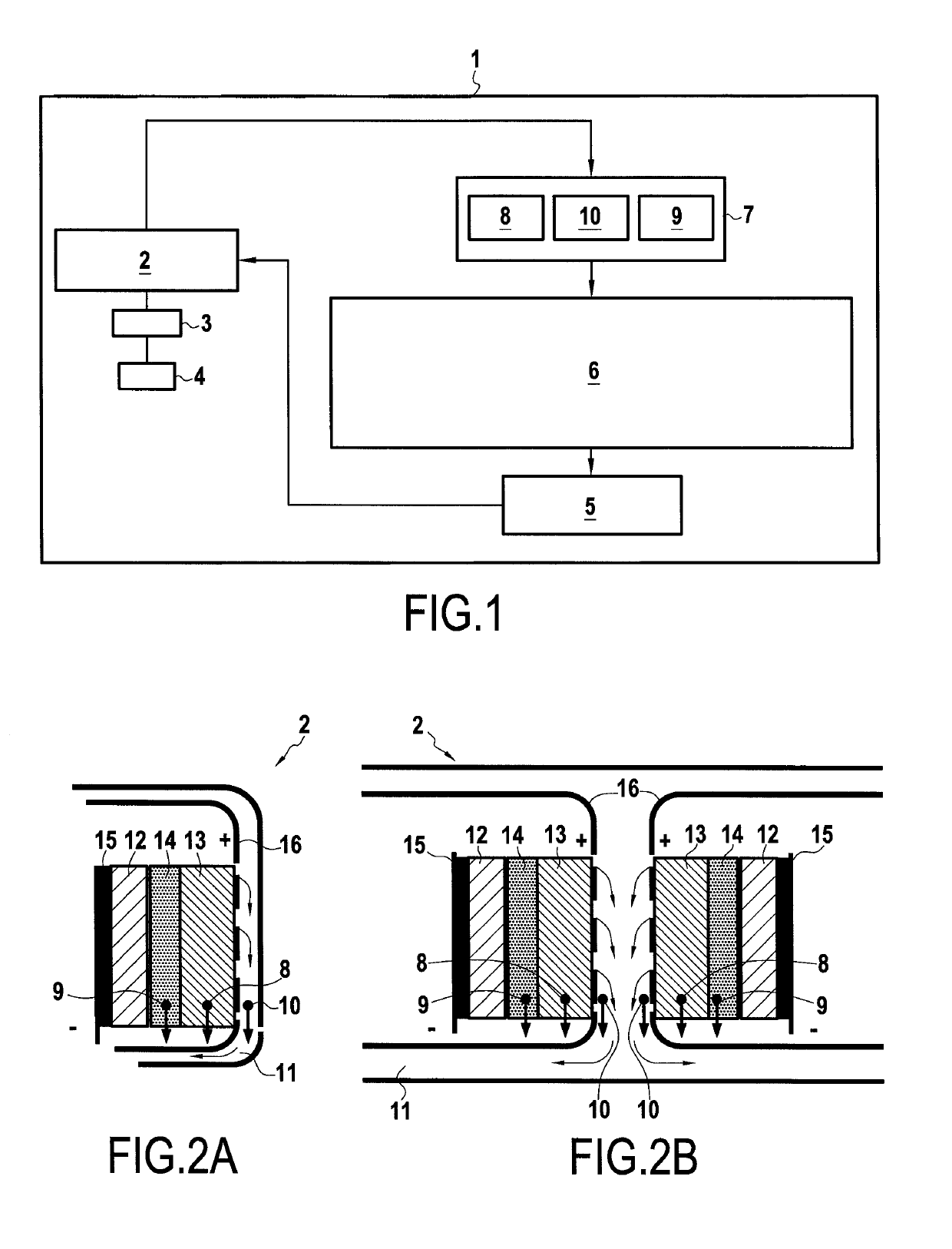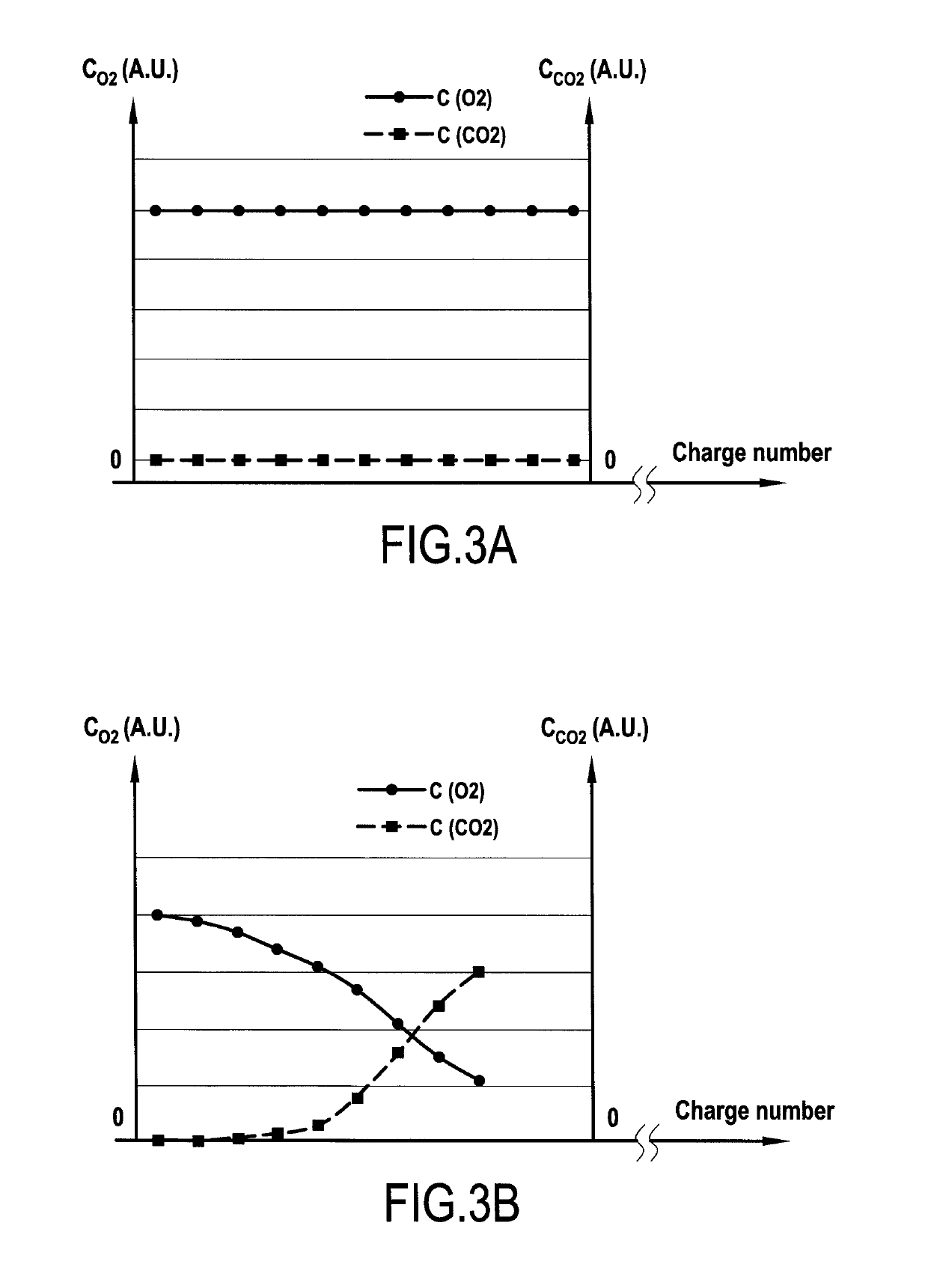Control device and method for charging a non-aqueous rechargeable metal-air battery
a non-aqueous rechargeable, control device technology, applied in the direction of batteries, cell components, instruments, etc., can solve the problems of poor capacity retention, sub>2 /sub> is detrimental to the battery, and the battery is not rechargeable in time, so as to prolong the use and anyway safe effect of metal air batteries
- Summary
- Abstract
- Description
- Claims
- Application Information
AI Technical Summary
Benefits of technology
Problems solved by technology
Method used
Image
Examples
Embodiment Construction
[0072]Reference will now be made in detail to exemplary embodiments of the disclosure, examples of which are illustrated in the accompanying drawings. Wherever possible, the same reference numbers will be used throughout the drawings to refer to the same or like parts.
[0073]FIG. 1 shows a schematic representation of a vehicle or a stationary system 1 comprising a control device 6 according to an embodiment of the present disclosure. In the following a vehicle 1 is described, however a stationary system comprises corresponding elements unless indicated in the to following description. The vehicle 1 may be a hybrid vehicle or an electric vehicle (i.e. a purely electrically driven vehicle). The vehicle 1 comprises at least one electric motor 4, which is powered by a battery or battery pack 2, preferably via an inverter 3. In case of a stationary system an electric distribution board 3 is desirably used instead or in addition to the inverter.
[0074]If the vehicle 1 is a hybrid vehicle, i...
PUM
| Property | Measurement | Unit |
|---|---|---|
| concentration | aaaaa | aaaaa |
| conductive | aaaaa | aaaaa |
| voltage | aaaaa | aaaaa |
Abstract
Description
Claims
Application Information
 Login to View More
Login to View More - R&D
- Intellectual Property
- Life Sciences
- Materials
- Tech Scout
- Unparalleled Data Quality
- Higher Quality Content
- 60% Fewer Hallucinations
Browse by: Latest US Patents, China's latest patents, Technical Efficacy Thesaurus, Application Domain, Technology Topic, Popular Technical Reports.
© 2025 PatSnap. All rights reserved.Legal|Privacy policy|Modern Slavery Act Transparency Statement|Sitemap|About US| Contact US: help@patsnap.com



